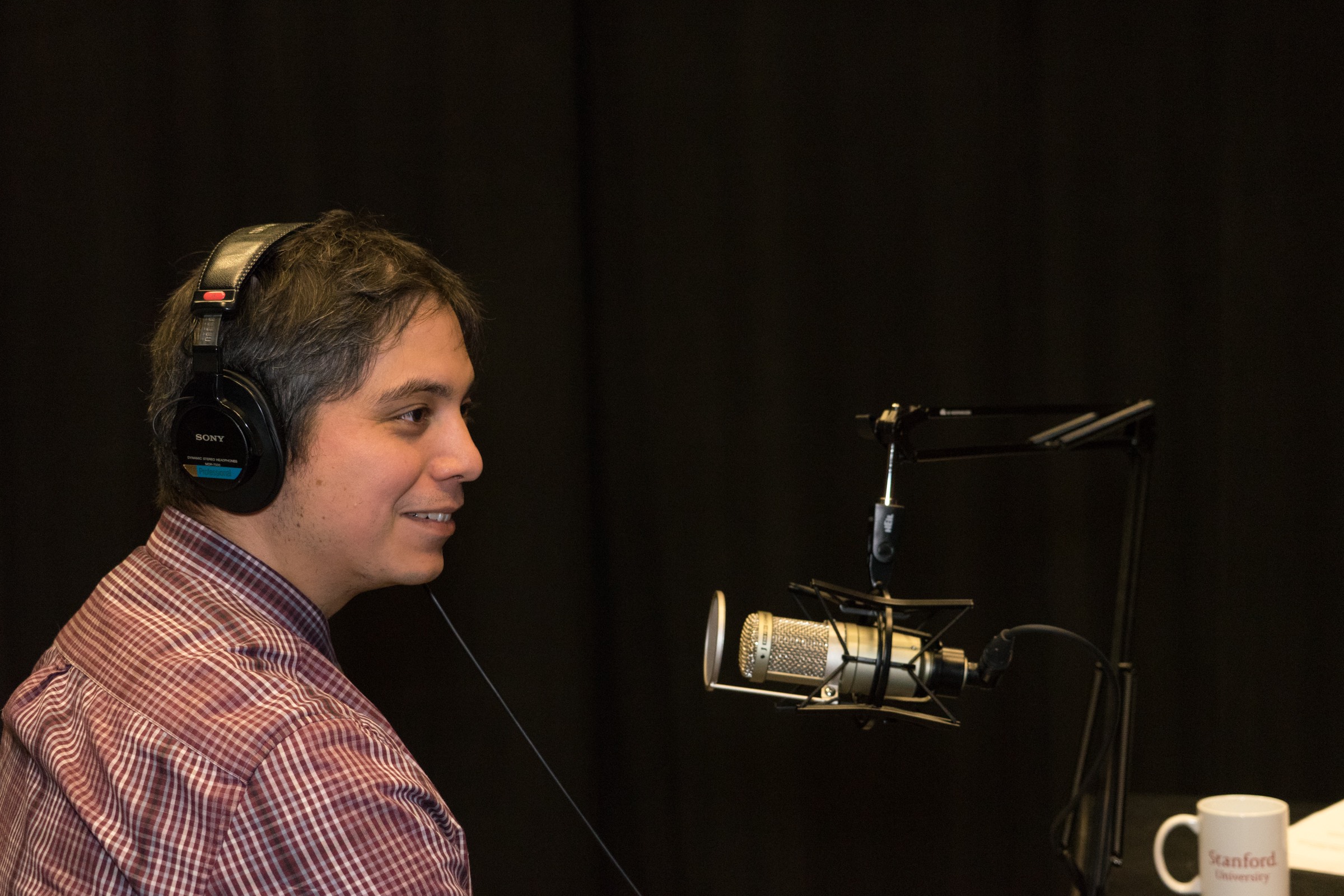
What happens when a high school teacher decides to welcome cell phones into the classroom instead of banning them?
That was part of a yearlong experiment that Antero Garcia, now an assistant professor at Stanford Graduate School of Education (GSE), undertook several years ago while he was teaching ninth-grade English at South Central High School in Los Angeles.
Seeing how much his students relied on their smartphones to connect with each other, he began exploring ways to incorporate these and other devices into his teaching. He shares his experience in a new book, Good Reception: Teens, Teachers and Mobile Media in a Los Angeles High School.
We talked to Garcia about how mobile devices are changing the culture of school campuses, what students can learn about trust and relationships in this digitized environment and the role teachers can play in that process.
Many teachers have a no-cell-phone policy in the classroom, but you take issue with that approach. Why?
The way we treat technology in schools is completely counter to what we know is true for adults. Our assumption about kids and technology—or anything having to do with play—is that it’s something they should do on their own time. But as adults, our relationship with technology isn’t going to be that way.
As you and I are talking, for instance, it’s possible that your phone might buzz. That doesn’t mean you’ll stop our conversation. You might take a glance and if there’s an emergency, you’d know you need to do something. That device is a meaningful way for you to sustain the relationships that are important to you, and there’s enough trust between us for me to assume that you’re engaged in our conversation.
What if that level of trust doesn’t exist between a student and a teacher? How do you know students are paying attention?
Teachers are in a tricky spot. Their mandate is classroom management: A “good” teacher is one who can control a classroom, and we have assumptions about what that looks like. If a principal walks into your classroom and every student is either silent or listening to one person speak, that looks like a room where the teacher has command. Your skill is tied to your ability to control the bodies and voices of young people.
That’s partly why changing our relationship with devices in the classroom feels so difficult. It’s fundamentally about shifting attention: If children are giving more attention to this device, then it seems the teacher has lost control.
We’ve set up this kind of power structure in the classroom that’s about control, not about learning. Changing that paradigm is about negotiation and ceding power. But that’s how trust and relationships are built.
You express skepticism in the book about programs that provide a mobile device for every student in a district. What’s the problem with that?
The value of bringing technology into the classroom is about the environment that we’re creating with it, not about what the device is going to do. It’s about integrating what you and I are already doing with it, whether that’s socializing or playing games or accessing information.
At the end of the day, these devices are about relationships—among kids, and between kids and their teachers. We have to keep asking questions about the impact new technology has on relationships. Are we bringing devices into the classroom in a way that strengthens and sustains these relationships? We somehow assume that if we equip kids with the right technology, they will just learn.
Many adults worry about their own attachment to their smartphones. Wouldn’t bringing these devices into the classroom reinforce that kind of dependence for kids?
It’s true that we’re not the best models for this. The first thing I did this morning when the alarm on my phone went off was check my email. I don’t think that’s healthy, but this is where schools can come into play—we can explore more mindful practices with these devices so that students don’t become adults who look at their phones first thing in the morning. Schools can be the place where we re-evaluate and remediate those relationships with technology. Otherwise it’s only going to get worse.
Antero Garcia joined GSE Dean Dan Schwartz and Senior Lecturer Denise Pope in the studio for an episode of School’s In, a half-hour radio show that airs weekly on SiriusXM Insight Channel 121. Listen from the link below and find more episodes of School's In at the Stanford Radio main page.



Subscribe to our monthly newsletter.